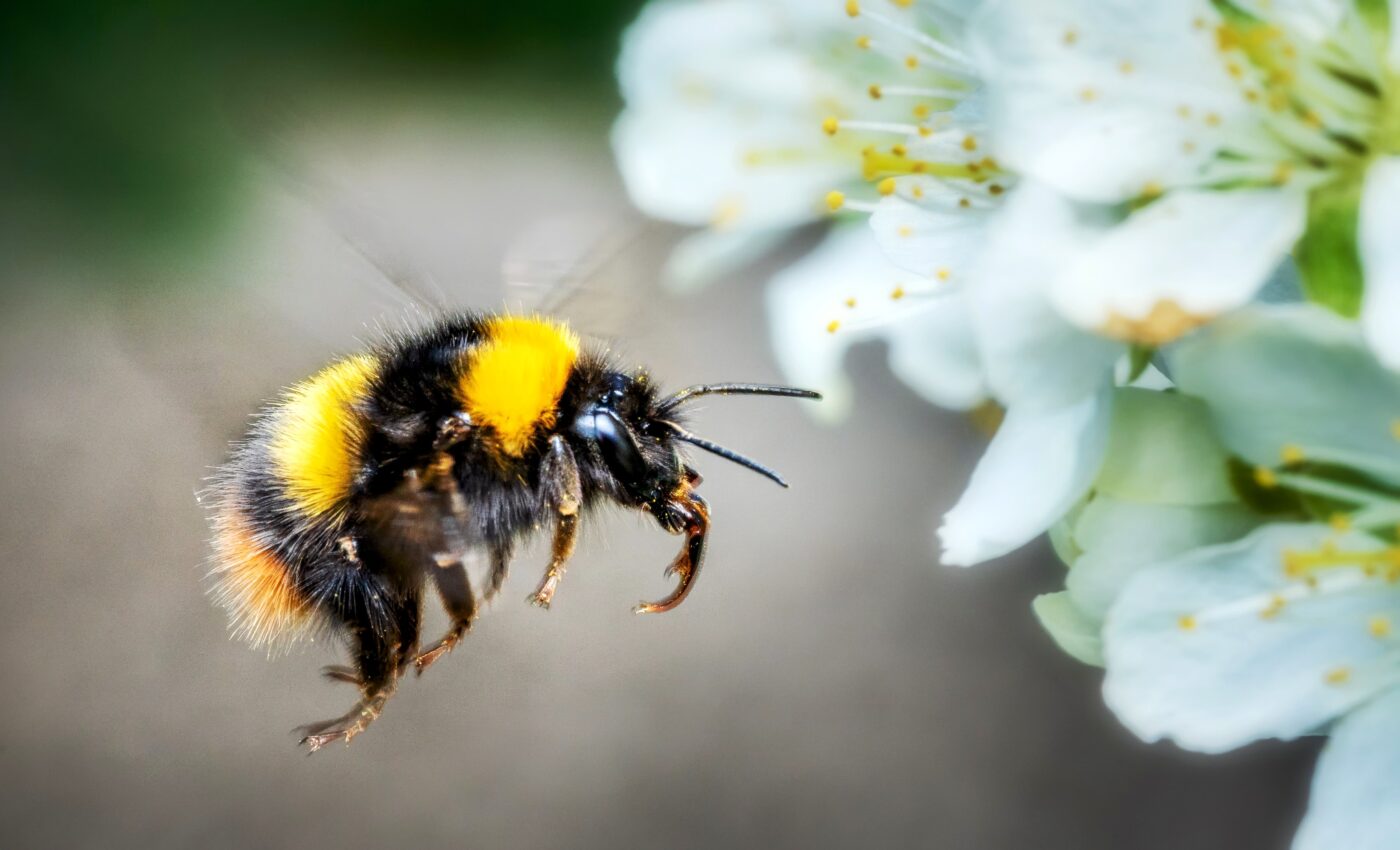
Carrying pollen increases bumblebees’ body temperature
During their foraging trips, bumblebees collect solid packets of pollen from flowers on their back legs to transport to their nests. Although bees seem to move from flower to flower with ease, these packets can weigh up to a third of their body weight.
Recently, a team of researchers from North Carolina State University has found that bumblebees carrying pollen experience significant increases in body temperature, raising questions about how these insects will be affected by warmer temperatures due to climate change.
Like other ectotherms, the body temperature of bumblebees is largely determined by their environment. While bumblebees are known to be exceptionally cold tolerant compared to other species of bees, shivering to warm up during cold periods, not much is known about how well they can tolerate heat.
The recent findings – showing that their body temperature rises by 0.07°C for every milligram of pollen that they carry, with fully laden bees being 2°C warmer than unladen ones – suggest that carrying a full load of pollen on a hot day may put them at greater risk of heat stress and perhaps even death.
“Getting warmer from carrying pollen could put bumblebees in the range of those stressful, critically hot temperatures,” said lead author Malia Naumchik, who conducted this research during her undergraduate degree in Biological Sciences at NC State and is currently a graduate student at Montana State University.
“This has important implications for bumblebees and climate change. As environmental temperatures increase, the bees’ operational range of temperatures could shrink significantly.”
Although scientists have recently noticed that bumblebee numbers and species diversity are declining all over the world, particularly in the regions most affected by global warming, the precise mechanisms through which climate change affects these insects have not been clearly understood. The discovery that carrying heavy loads of pollen significantly increases their body temperature could be a major piece of this puzzle.
Since pollen is crucial for every stage of bumblebees’ lives, and without enough pollen, their survival as a species is at risk, better understanding how increased temperatures impact their pollen-carrying capacities is crucial.
The increased risk of heat stress in pollen-carrying bumblebees could have critical implications not only for their health and survival in a warming world, but also for pollination in general, and could ultimately affect not only ecosystems, but also agricultural practices.
“We need to know how bumblebees may change their behavior, to better understand how this could affect how much pollen they collect and how much pollination they perform during hot days,” explained senior author Elsa Youngsteadt, a professor in Applied Ecology at NC State.
“Whether it’s carrying smaller loads of pollen or foraging for shorter times, it could result in less pollen coming to the colony and fewer plants being pollinated. This is particularly important since bumblebees provide critical ecosystem services and are key pollinators for agriculture, especially in the United States and Europe.”
The study is published in the journal Biology Letters.
More about bumblebees
Bumblebees are large, hairy, social insects belonging to the genus Bombus in the family Apidae. They are known for their round bodies, black and yellow bands, and distinct buzzing sound.
Bumblebees are native to the temperate Northern Hemisphere and are commonly found in higher altitudes or latitudes. Unlike honey bees, bumblebees can tolerate colder weather, thanks to their large body size and dense pile, or ‘fur’, which helps insulate them.
Bumblebees live in colonies, typically led by a single queen who is responsible for producing new workers. The size of the colony depends on the species but can range from around 50 to a few hundred individuals.
The queen lays eggs that develop into female workers, who carry out most of the tasks within the colony, such as foraging for food (nectar and pollen), feeding the larvae, and defending the nest.
Males, or drones, and new queens are produced later in the season. These drones and new queens leave the colony to mate. The fertilized queens then seek out a suitable place to hibernate for the winter, while the rest of the colony, including the old queen, workers, and drones, usually die off with the onset of cold weather.
Bumblebees are important pollinators for both wild and cultivated plants. Their method of pollination is often described as ‘buzz pollination’ or ‘sonication,’ where they vibrate their flight muscles rapidly to dislodge pollen from flowers. This vibration is so specific that some plants have evolved to release their pollen only when they detect this frequency.
Like many insects, bumblebees face threats due to habitat loss, climate change, pesticide exposure, and disease. Their decline in certain regions has raised concerns because of their role in pollination and ecosystem function. Conservation efforts are underway in many regions to protect and preserve these important pollinators.
—-
By Andrei Ionescu, Earth.com Staff Writer
Check us out on EarthSnap, a free app brought to you by Eric Ralls and Earth.com.













